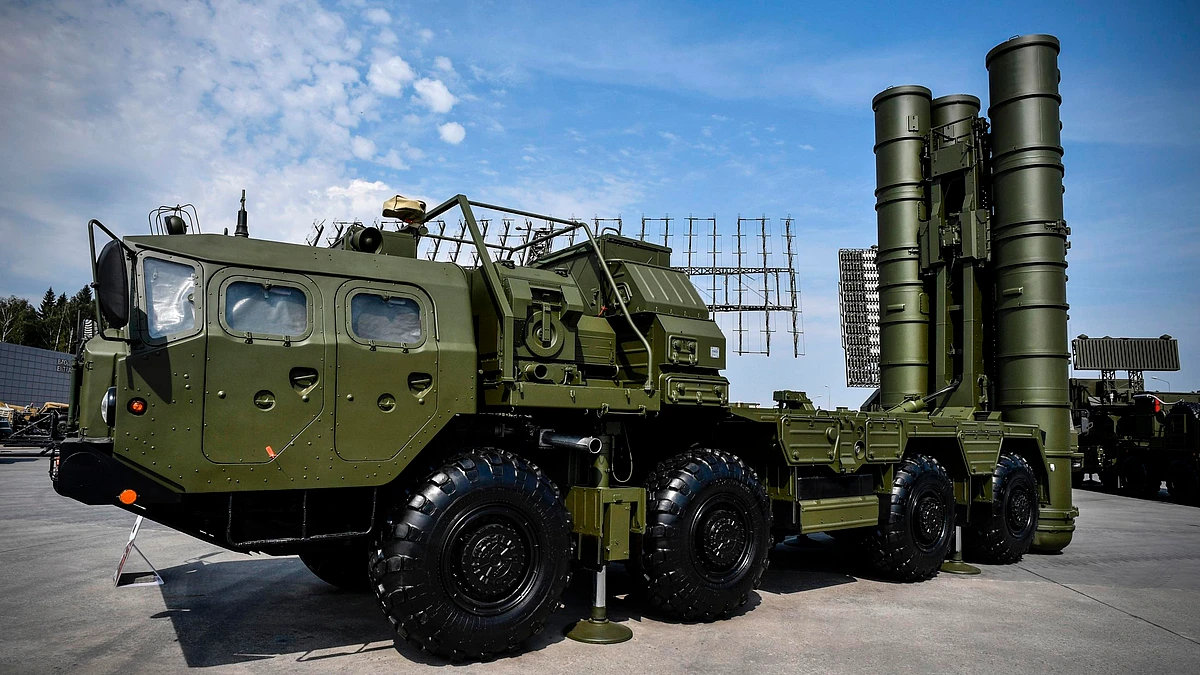
In an era marked by escalating regional tensions, unmanned aerial incursions, and rapidly advancing missile technologies, India’s air defense strategy has never been more critical. With threats evolving in both scale and complexity, nations are being forced to reevaluate their defensive infrastructure. For India, the answer lies in establishing a multi-layered air defense network that can deter, detect, and destroy incoming aerial threats — from fighter jets to drones and ballistic missiles.
At the heart of this evolving defense doctrine are two key missile systems: the imported Russian-made S-400 Triumf and the indigenously developed Akash missile system by DRDO. These systems represent more than just technological prowess; they symbolize India’s commitment to safeguarding its airspace through a blend of international collaboration and self-reliant innovation.
The S-400, with its long-range radar and high-altitude interception capabilities, provides India with strategic reach and acts as a powerful deterrent against adversaries. It is capable of tracking and neutralizing a wide spectrum of aerial threats, including stealth aircraft and cruise or ballistic missiles, well before they reach Indian airspace. Its deployment along critical frontiers such as the Indo-China and Indo-Pak borders significantly boosts India’s ability to maintain aerial supremacy in a contested environment.
Meanwhile, the Akash missile system, proudly developed under India’s “Make in India” defense initiative, forms the backbone of India’s medium-range air defense strategy. With a range of 25–30 kilometers and the ability to engage multiple targets simultaneously, the Akash system is tailored to respond to low- and mid-level threats like helicopters, UAVs, and fighter aircraft flying at sub-sonic and supersonic speeds. Its integration with radars and command centers enables rapid target acquisition and neutralization in real-time battlefield scenarios.
Together, the S-400 and Akash create a complementary, layered defense architecture. This synergy ensures that no single system is overwhelmed and provides redundancy, improving operational readiness and reducing vulnerability to saturation attacks. The deployment strategy leverages the strengths of both systems — long-range preemptive interception by the S-400 and mid-range tactical coverage by the Akash — to create a dense, overlapping shield.
Furthermore, these systems are not standalone assets but are deeply integrated with India’s network-centric warfare approach. Real-time communication between missile batteries, surveillance radars, and command-and-control centers ensures seamless coordination and quick response to evolving threats. This integration significantly enhances India’s ability to protect critical infrastructure, airbases, and urban centers from surprise attacks or escalations.
In a geopolitical landscape where air dominance can determine the outcome of conflicts, India’s acquisition and deployment of these missile systems reflect strategic foresight. They not only bolster national defense but also serve as tools of diplomacy and deterrence, signaling to potential adversaries that India is equipped and ready to defend its skies.
Sr. Headings
1) Introduction
2) S-400 Triumf: India’s Strategic Shield
3) Akash Missile System: Indigenous Air Defense
4) Synergy Between S-400 and Akash Systems
5) Operational Deployments and Effectiveness
6) Conclusion
7) FAQs

Introduction
India’s air defense strategy has evolved to address the complexities of modern aerial threats. Central to this strategy are the S-400 Triumf and Akash missile systems, which together create a formidable shield against enemy aircraft, missiles, and drones. This article delves into how these systems enhance India’s defensive capabilities.
In today’s rapidly evolving global security landscape, air superiority is no longer just about having the best fighter jets — it is about possessing robust, integrated missile defense systems that can detect, deter, and destroy a wide spectrum of aerial threats. With the increasing frequency of drone incursions, missile testing by adversaries, and rising geopolitical tensions in South Asia, India faces the urgent imperative of protecting its vast and complex airspace.
Recognizing these modern challenges, India has taken decisive steps to transform its air defense architecture through the deployment of two formidable systems: the Russian-made S-400 Triumf and the indigenously developed Akash missile system. These two missile defense platforms not only enhance India’s tactical and strategic military capabilities but also reflect a dual approach to national security — one that blends advanced foreign procurement with homegrown innovation.
The S-400 Triumf, considered one of the most advanced surface-to-air missile (SAM) systems in the world, extends India’s defensive reach up to 400 kilometers. It can simultaneously track and engage multiple aerial targets, including ballistic missiles, stealth aircraft, and hypersonic threats. With high mobility, advanced radar capabilities, and long-range engagement envelopes, the S-400 strengthens India’s ability to neutralize threats before they even enter its sovereign airspace.
On the other end of the spectrum lies the Akash missile system — a symbol of India’s commitment to Atmanirbhar Bharat (self-reliant India). Developed by the Defence Research and Development Organisation (DRDO), Akash fills a critical gap in medium-range air defense. Its successful operational deployment by both the Indian Air Force and the Indian Army underlines its versatility, reliability, and adaptability across diverse terrains and combat scenarios.
Together, the S-400 and Akash systems form a potent multi-tiered shield, enabling India to counter high-altitude threats as well as low-flying intrusions with equal efficiency. This layered air defense strategy ensures seamless coverage over critical regions, military installations, and urban centers, making it significantly harder for any hostile aircraft or missile to penetrate Indian defenses undetected or unchallenged.
Moreover, the integration of these missile systems into India’s broader command-and-control infrastructure enhances real-time surveillance, quick reaction capability, and battlefield awareness. This network-centric warfare approach transforms India’s air defense into a responsive, adaptive, and future-ready system capable of responding to both conventional and asymmetric threats.
In essence, the deployment of the S-400 and Akash systems marks a watershed moment in India’s military modernization journey. It demonstrates strategic foresight, technological maturity, and a commitment to protecting the nation’s sovereignty from current and emerging threats. This blog delves deeper into the features, deployments, and strategic impact of these missile systems — and how they are reshaping India’s ability to control and defend its skies.
S-400 Triumf: India's Strategic Shield
The S-400 Triumf, developed by Russia’s Almaz Central Design Bureau, is one of the most advanced long-range surface-to-air missile systems globally. India procured this system to bolster its air defense, especially against threats from neighboring adversaries.
Key Features:
Range: Capable of engaging targets up to 400 km away.
Target Tracking: Simultaneously tracks and engages multiple targets, including aircraft, UAVs, and ballistic missiles.
Deployment: Mobile launchers allow rapid deployment across various terrains.
The S-400’s integration into India’s defense matrix provides a strategic advantage, enabling early detection and neutralization of potential threats.
As India seeks to safeguard its airspace in an increasingly volatile region, the S-400 Triumf surface-to-air missile system stands out as a game-changing addition to the nation’s defense arsenal. Developed by Russia’s Almaz Central Design Bureau, the S-400 is regarded as one of the most advanced long-range air defense systems in the world, capable of neutralizing a wide range of airborne threats with unmatched precision and speed.
India signed a $5.43 billion contract with Russia in October 2018 to procure five regiments of the S-400 system under the “Triumf” program. Despite diplomatic pushback and the threat of U.S. sanctions under the CAATSA (Countering America’s Adversaries Through Sanctions Act), India remained resolute in its decision, recognizing the strategic necessity of the system in light of mounting regional threats from adversaries like China and Pakistan.
What makes the S-400 so effective is its multi-layered engagement envelope. The system is equipped with four different types of missiles — each designed to engage targets at different ranges and altitudes:
40N6 missile: capable of striking targets up to 400 km away
48N6: medium-long range interception (up to 250 km)
9M96E2: medium-range engagements (up to 120 km)
9M96E: short to medium-range targets (up to 40 km)
This flexible configuration allows the S-400 to create a dense “missile dome,” where various types of threats — from stealth fighters and cruise missiles to ballistic missiles and UAVs — can be tracked and destroyed simultaneously.
The system boasts state-of-the-art radar and surveillance capabilities. Its primary radar, the 91N6E Big Bird acquisition radar, can detect targets up to 600 kilometers away, while its engagement radar, the 92N6E Grave Stone, is capable of tracking and guiding missiles to multiple targets at once. A single S-400 regiment can track up to 300 targets and engage 36 of them simultaneously, making it extremely difficult for enemy aircraft to evade detection or overwhelm the system with saturation attacks.
In the Indian context, the S-400’s deployment is strategically critical. The first regiment has reportedly been deployed along the western front to counter aerial threats from Pakistan, while subsequent units are expected to be positioned along the northern border to deter Chinese aggression. Given the high-altitude terrain of the Himalayas and the proximity of key Indian installations to these borders, the long-range interception capability of the S-400 gives India a much-needed buffer and early-warning shield.
Beyond tactical defense, the S-400 serves a broader strategic purpose. It strengthens India’s deterrence posture by complicating the enemy’s aerial calculus — any attack plan must now contend with a defense system capable of knocking down even the most advanced fighter jets or missiles before they can cause harm. The mere presence of the S-400 shifts the balance of power in India’s favor, especially in contested zones like Ladakh or Arunachal Pradesh.
Moreover, the acquisition of the S-400 signals India’s intent to assert air dominance and enhance joint operations capability. It integrates seamlessly with India’s broader Integrated Air Command and Control System (IACCS), allowing for coordinated operations between radar networks, fighter aircraft, and missile batteries in real-time.
In summary, the S-400 Triumf is more than a missile system — it is a strategic shield that reshapes India’s air defense doctrine. With its unmatched range, versatility, and lethality, it not only secures India’s borders but also elevates its status as a regional power capable of defending its interests against both conventional and emerging aerial threats.
India's Cybersecurity Response
As India rapidly advances in the digital domain — from adopting smart infrastructure and cloud-based governance to expanding its financial technology ecosystem — the threat of cyber warfare has escalated significantly. The nation has witnessed a sharp rise in cyberattacks targeting critical infrastructure, banking systems, healthcare data, and even military communication networks. In response, India has undertaken a multi-pronged approach to strengthen its cybersecurity architecture, recognizing that digital vulnerabilities can pose as much of a national security threat as physical intrusions.
The Indian government has established several dedicated institutions to combat these threats. The National Critical Information Infrastructure Protection Centre (NCIIPC) focuses on securing vital systems such as power grids, telecom networks, and financial services. The Indian Computer Emergency Response Team (CERT-In) plays a frontline role in issuing alerts, coordinating responses, and analyzing cyber incidents. Moreover, under the National Cyber Security Policy and the Digital India initiative, India has invested heavily in creating indigenous cyber defense tools, training cybersecurity professionals, and promoting public-private partnerships to enhance resilience.
One of the key developments in India’s cybersecurity framework is the establishment of the Defence Cyber Agency (DCyA), a tri-service command designed to conduct offensive and defensive cyber operations. Working under the Integrated Defence Staff, this agency is tasked with protecting military networks and conducting strategic cyber operations that can act as a force multiplier during conflict situations. In addition, India’s emphasis on data localization and the proposed Personal Data Protection Bill are measures aimed at safeguarding citizens’ digital rights while ensuring critical data remains within national jurisdiction.
India is also enhancing cooperation with international allies through bilateral and multilateral cyber agreements. These partnerships aim to share intelligence, improve attribution of cyber threats, and coordinate responses to large-scale attacks. Collaborative efforts with countries like the U.S., Israel, Japan, and members of the QUAD group are helping India adopt global best practices in threat mitigation, AI-driven cybersecurity, and cybercrime investigation.
Despite these strides, challenges remain. The lack of a unified national cybersecurity strategy, insufficient cyber-awareness at the grassroots level, and a growing talent gap in skilled cybersecurity professionals hinder India’s ability to build a truly robust cyber defense. Nonetheless, the government’s commitment to expanding cyber capabilities, securing the digital economy, and preparing for future digital conflicts positions India on the path toward becoming a cyber-resilient nation.
Synergy Between S-400 and Akash Systems
The integration of both S-400 and Akash systems creates a multi-layered air defense network:
S-400: Provides long-range coverage, detecting and neutralizing threats from afar.
Akash: Offers medium-range defense, effectively handling threats that penetrate deeper into Indian airspace.
This layered approach ensures comprehensive coverage, minimizing vulnerabilities and enhancing response times against diverse aerial threats.
India’s air defense strategy is not merely about acquiring powerful standalone systems; it’s about creating a seamless, multi-tiered architecture that can intercept threats at varying ranges and altitudes. This is where the synergy between the S-400 Triumf and Akash missile systems becomes a critical force multiplier. While both are distinct in origin and operational scope — the S-400 being a Russian long-range system and Akash an Indian medium-range platform — together they form a layered shield that ensures comprehensive airspace protection. The S-400 system provides long-range coverage capable of neutralizing threats as far as 400 kilometers away, such as incoming fighter aircraft, ballistic missiles, or stealth drones. It serves as the first line of interception, designed to detect and destroy threats before they reach critical Indian airspace.
In contrast, the Akash system fills the crucial gap at the medium range, capable of engaging targets up to 30 km away with high maneuverability and quick response time. It is optimized for handling low-flying threats, including helicopters, subsonic cruise missiles, and drones that may have slipped past long-range radars. The Akash batteries can be rapidly deployed and repositioned, giving India a mobile and flexible layer of defense around high-value targets like command centers, airbases, and urban installations.
What makes the synergy between these two systems so effective is their interoperability within India’s Integrated Air Command and Control System (IACCS). Through centralized command networks, both systems can share surveillance data, optimize engagement timelines, and coordinate interception protocols. This integration ensures that the systems do not operate in isolation or redundancy but as a cohesive network, thereby improving reaction time, eliminating gaps in coverage, and reducing the risk of overlapping responses. For instance, while the S-400 might detect and engage an incoming threat at long range, Akash can act as a second line of defense should the threat maneuver or fragment closer to Indian territory.
This combined strategy creates what defense analysts call a “defense-in-depth” approach — a method that increases survivability and redundancy against diverse and evolving aerial threats. Whether faced with a sophisticated missile barrage, coordinated drone swarm, or electronic warfare decoys, the integrated response from S-400 and Akash systems makes it extremely difficult for adversaries to overwhelm Indian air defenses. Moreover, by integrating an indigenous system like Akash with an imported platform like S-400, India also ensures a balance between global capability acquisition and domestic technological development.
In summary, the interoperability and complementarity of the S-400 and Akash systems reflect a strategic doctrine that is both modern and deeply rooted in layered defense philosophy. Their combined deployment offers India a scalable, responsive, and resilient air defense network — one that not only protects against current threats but is adaptable to the emerging challenges of future aerial warfare.
Operational Deployments and Effectiveness
Recent escalations have tested the efficacy of India’s air defense systems:
S-400 Deployment: Successfully intercepted hostile aircraft and missiles during heightened tensions, showcasing its long-range capabilities.
Akash Utilization: Effectively neutralized low-flying drones and helicopters attempting to breach Indian airspace.
These deployments underscore the systems’ readiness and effectiveness in real-world scenarios, reinforcing India’s defensive posture.


The S-400 serves as a long-range air defense system, capable of detecting and neutralizing threats like enemy aircraft and missiles up to 400 km away.
While the S-400 covers long-range threats, the Akash system addresses medium-range targets, ensuring layered defense and comprehensive coverage.
Yes, during recent border tensions, both systems were deployed effectively to intercept and neutralize various aerial threats, demonstrating their operational readiness.
Yes, the Akash system is developed by India’s DRDO, emphasizing the nation’s focus on self-reliance in defense technology.
By providing multi-layered air defense, these systems deter potential aggressors, protect critical infrastructure, and ensure rapid response to aerial threats, thereby strengthening national security.
Conclusion
India’s investment in both the S-400 and Akash missile systems reflects a strategic approach to national defense. The combination of imported advanced technology and indigenous innovation ensures a robust, multi-layered air defense capable of addressing a spectrum of aerial threats. As regional dynamics evolve, such systems will continue to play a pivotal role in safeguarding India’s sovereignty.
OCP Academy
(A Unit of OCP Foundation)
Learning Today, Leading Tomorrow

